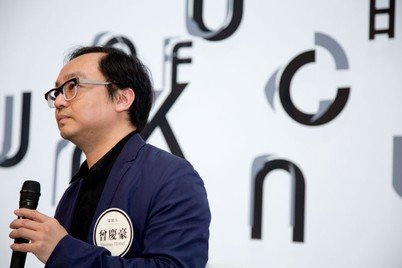Cloud of Unknowing: an Exhibition about Modern Asian Architecture
East and West, buildings and the spaces in between, and art and architecture came together in an exhibition co-curated by Thomas Tsang of the Faculty of Architecture in 2014 to celebrate Taipei's 130th anniversary.
One question we had was, what are the beliefs underpinning East Asian modernism?
East and West, buildings and the spaces in between, and art and architecture came together in an exhibition co-curated by Thomas Tsang of the Faculty of Architecture in 2014 to celebrate Taipei's 130th anniversary.
Mr Tsang was invited by the chief curator of Taipei Fine Arts Museum to put together the museum's first themed exhibition on architecture and the city with renowned Taiwanese writer and critic, Professor Roan Ching-yueh of Taiwan's Yuan Ze University.
They saw it as an opportunity to focus on the response to modernism – and its Western canons – in Asian cities and invited 25 unknown/renowned architects and artists from Taiwan, Hong Kong, Mainland China and Japan to develop new site-specific artworks to be exhibited.
"One question we had was, what are the beliefs underpinning East Asian modernism?" Mr Tsang said. "We didn't want the exhibition to feature works we already knew. We wanted unexpected and unknown works."
The broad concept was worked out during sessions that included a visit to misty hot springs in Taiwan – bringing to mind a phrase from a medieval English text, The Cloud of Unknowing, about submitting to the unknown and thereby getting a glimpse of god.
This became the title of the exhibition, which featured full-scale installations, photographs, drawings, collages and other exhibits that explored the modernism theme as well as the different ways of experiencing architecture and the ambiguous status of architecture as an object of display. For instance, the Tohoku Institute of Technology's Department of Architecture created a model of a town destroyed by Japan's 2011 tsunami, which showed the layout minus the buildings that were destroyed, with notes by people about their memories of the area, such as the spot they first fell in love.
The works were organised along seven "streets" that reflected such perspectives as learning, objects, utopia and landscape. Some of the works were hung on the walls, some suspended from the ceiling, some were on the floor, and some could be entered. "We wanted visitors to blur their expectation between fiction and reality, and inhabit inside the artwork," Mr Tsang said. "It's this idea of transmitting ideas. People came and it was totally different from what they expected."
Mr Tsang and Professor Roan also challenged the contributors to work in mediums they were less known for – for instance, C.Y. Lee, the architect of Taipei 101, once Asia's tallest tower, contributed paintings and was deliberately given one of the smallest spaces in the venues.
The three-month-long exhibition, held in 2014, also featured a public forum, public lectures, and observational touring workshops to promote discussion about cities. The exhibition was nominated for the Taishin Arts Award for Visual Arts and selected as a finalist in the 2014 ADA Awards for Emerging Architects, and was among the top five public exhibitions for 2014 in Taiwan according to a poll as reported by China Times.
Mr Thomas Tsang of the Department of Architecture received the Faculty Knowledge Exchange (KE) Award 2016 of the Faculty of Architecture for the project 'Cloud of Unknowing: A City with Seven Streets'.



